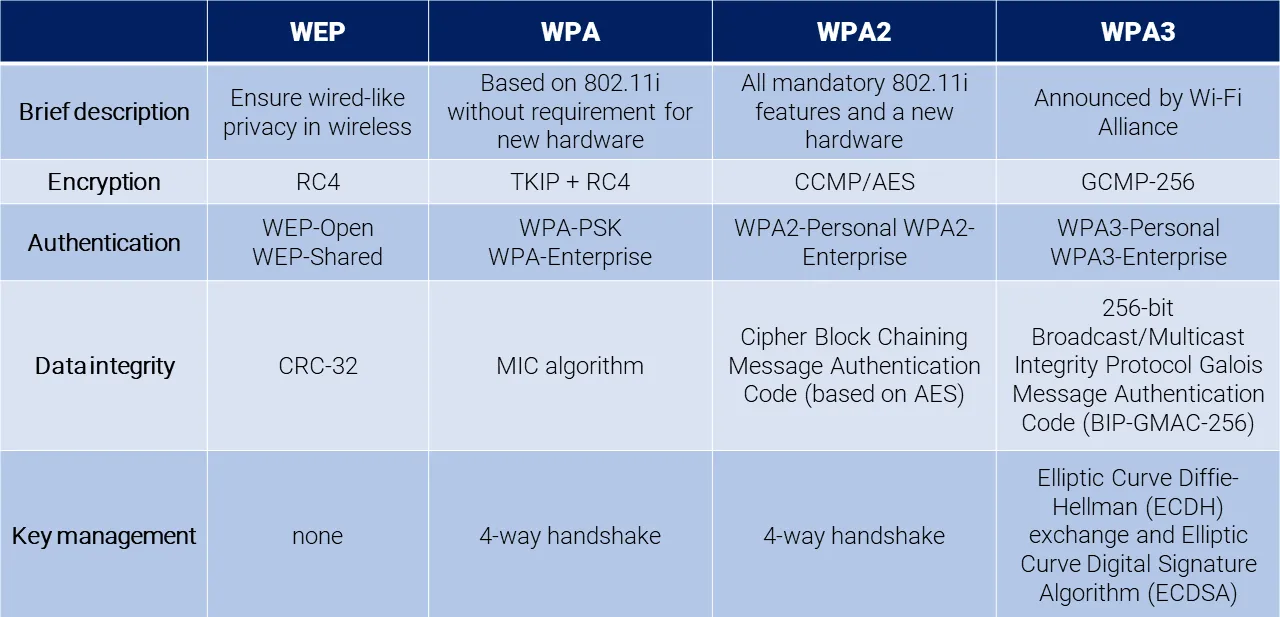WPA3
Firstly, a couple of words about the "outdated" WPA2 - it was developed back in 2004 and two years later it was certified for mandatory support of all Wi-Fi devices. Its relevance has decreased significantly in the era of high-tech bruteforcing and cyber attacks, moreover, over time the standard discovered additional critical vulnerabilities. Progress is inexorable, as new technologies bring modern, more secure and reliable protocols, one of which will be WPA3.
The WPA3 standard is developed by Wi-Fi Alliance, which is engaged in the development of wi-fi technologies and certification of the devices. This standard is better protected against dictionary attacks or brute force ⁄ brute forcing of passwords. Moreover, the main authentication algorithm WPA-PSK has been replaced by the more reliable SAE (the previous one, in fact, was not well protected from interception of packets with data). The new algorithm is configured to eliminate the possibility of offline attacks because it requires direct interaction with APs and the passphrase is essentially never opened. The WPA3 protocol supports several modes - Personal and Enterprise. The first mode, Personal, provides fully secure password authentication using the SAE algorithm described above (with protection that makes it difficult to find the key) and does not support legacy protocols. Enterprise mode for business users provides additional network protection with "192-bit cryptographic strength", there is an increased level of fault tolerance.
Distinctions of security standards

Worth noting that there is also another system called Easy Connect - connecting gadgets with limited interface or without screen (for example, smart home devices). What does it mean? - The users will be able to connect such devices with the help of tablets ⁄ smartphones and QR code.
"WPA3 continues the era of Wi-Fi security evolution" - thinks Edgar Figueroa, the President of Wi-Fi Alliance Corporation and it is hard to argue with him. Certification of devices that support WPA3 wifi has already begun, but we hasten to reassure our readers, the protocol WPA2 will continue to operate in networks until the three completely replace it, which will not happen so soon (let's say as the market grows, according to some estimates closer to the end of 2019).




